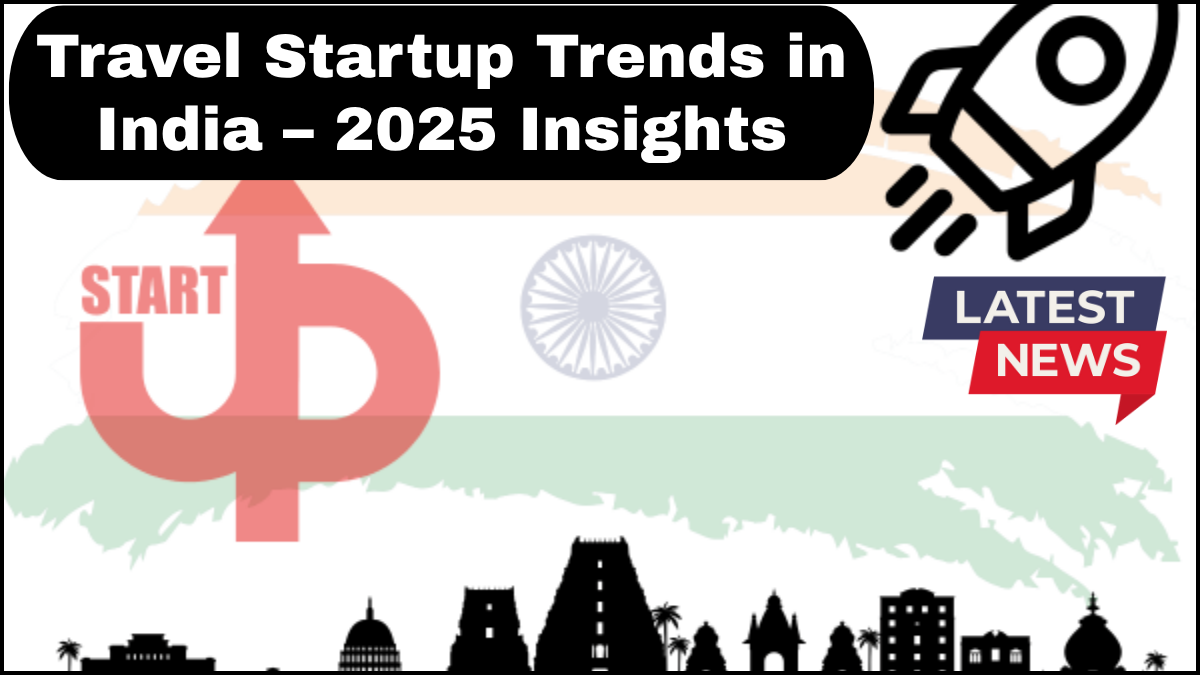India’s travel ecosystem is evolving fast, fueled by digital innovation, changing consumer behavior, and a growing appetite for curated, experience-based journeys. In 2025, travel startup trends in India reflect a shift from volume-driven tourism to value-driven, tech-enhanced experiences. This transformation is not just redefining the tourism business—it’s reshaping how people explore, book, and live their travel dreams.

Here’s a deep dive into the key travel startup trends dominating India’s landscape in 2025.
Rise of Hyper-Personalization
In 2025, travelers expect more than just a trip—they want experiences crafted to their interests, moods, and budgets. Travel startups are using AI and big data to deliver hyper-personalized itineraries. Platforms now assess users’ browsing behavior, social media activity, and booking history to recommend destinations, accommodations, and even activities tailored specifically to individual preferences.
For example, Bengaluru-based startups are offering AI-powered apps that not only suggest offbeat travel spots but also sync with your calendar, food preferences, and even your Spotify playlists to recommend mood-matching getaways.
Sustainable and Responsible Travel on the Rise
Travel startup trends 2025 are deeply rooted in sustainability. Indian consumers are increasingly conscious of their environmental impact. As a result, eco-tourism and green travel solutions are surging. Startups are tapping into this by offering carbon offsetting options, promoting zero-waste stays, and partnering with local communities to ensure ethical tourism.
Platforms like NotOnMap and Wovoyage are promoting slow travel and rural experiences, directly supporting local economies while giving travelers authentic cultural interactions.
Smart Travel with AI, AR, and VR
The tech backbone of India’s travel startup ecosystem has grown stronger. In 2025, artificial intelligence, augmented reality (AR), and virtual reality (VR) are no longer gimmicks—they’re core to the user experience. From AI chatbots assisting with bookings to AR-based local guides and VR-powered destination previews, technology is enriching how travelers plan and enjoy their journeys.
Startups like TBO.com and PickYourTrail are integrating immersive previews of hotels and destinations, helping users make better-informed decisions before they book.
Micro-Trips and Weekend Travel Boom
With hybrid work becoming the norm, there’s a surge in demand for short, flexible getaways. Travel startups are capitalizing on this trend by offering weekend trip packages, micro-getaways, and flash deals targeting urban professionals and remote workers.
These new-age tourism business models focus on spontaneity—apps that let users find and book a curated trip within hours, complete with transport, stay, and activity suggestions.
Vernacular and Voice Search Integration
A large segment of Indian travelers are from Tier II and Tier III cities. Recognizing this, travel startups are integrating vernacular content and voice-based search in regional languages. Hindi, Tamil, Bengali, and Marathi are now embedded in UI/UX designs to tap into the next billion users.
This democratization of travel services is expanding the market and making travel planning accessible beyond metro-based English-speaking audiences.
Blockchain in Booking and Identity Verification
As security and data privacy concerns grow, blockchain is emerging as a key trend among Indian travel startups. Blockchain is now being used for secure transactions, transparent reviews, and seamless identity verification. This ensures better trust and fraud prevention, especially in peer-to-peer travel platforms and short-term rentals.
Platforms are also experimenting with NFTs as loyalty rewards for repeat customers—offering exclusive travel perks and discounts in a decentralized format.
Integration with Fintech for Travel Financing
Another notable trend in 2025 is the blend of fintech and travel. Startups are offering “travel now, pay later” options, installment plans, and micro-financing partnerships to make travel more financially accessible. This is particularly appealing to younger travelers and students who want premium experiences without upfront financial strain.
Travel startups like SanKash are making high-end travel viable by offering low-interest EMI plans bundled with tours and bookings.
Women-Centric and Solo Travel Solutions
The rise in solo and women-only travel has spurred a new wave of startups that offer safety-first, community-driven experiences. These platforms provide verified stays, 24×7 SOS support, and access to trusted local networks. Women-specific packages, retreats, and cultural immersions are gaining traction, especially among urban millennial women.
Companies like The Flapper Life and Girls on the Go Club are redefining what solo travel looks like for Indian women.
FAQs
Q1. What are the top travel startup trends in India for 2025?
Top trends include hyper-personalized experiences, AI/VR integrations, sustainable travel solutions, blockchain-based bookings, weekend travel, and vernacular search adoption.
Q2. How is technology influencing the tourism business in India?
Technology is streamlining every aspect of the tourism business—from trip planning and bookings to real-time support and immersive destination previews using AI, AR, and VR.
Q3. What role does sustainability play in travel startups now?
Sustainability is a key pillar. Startups are focusing on eco-friendly stays, local partnerships, carbon offsetting, and promoting slower, more mindful travel options.
Q4. Are there finance options available for travelers in 2025?
Yes, many travel startups now offer installment plans, travel EMIs, and pay-later options through fintech integrations to make travel more accessible.
Q5. How are travel startups addressing safety, especially for women?
By offering verified accommodations, real-time safety support, and women-only trips, startups are prioritizing safe, community-based travel for solo and female travelers.
click here to learn more